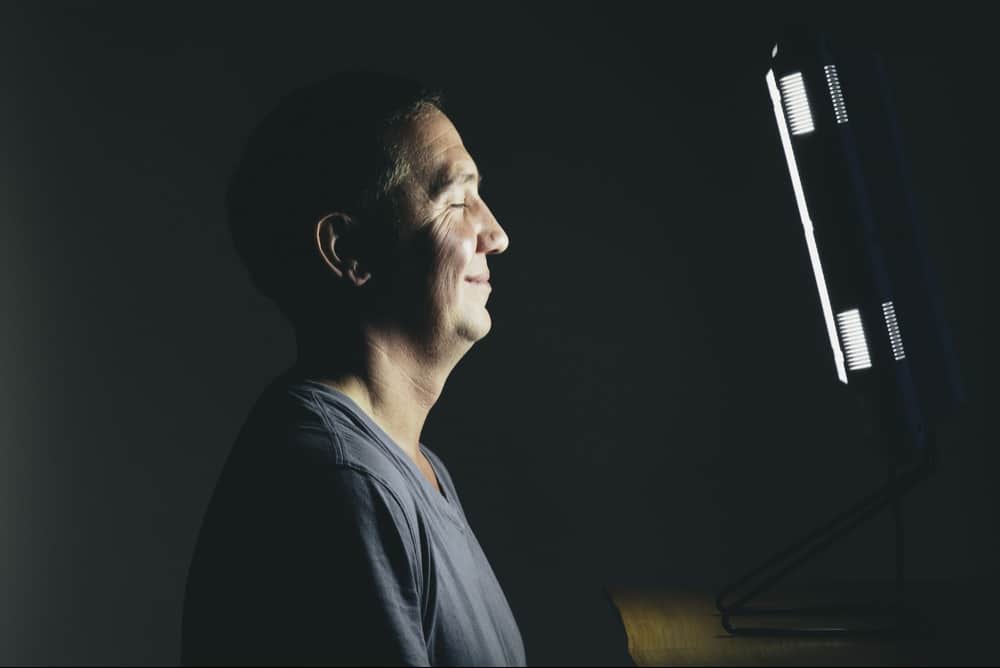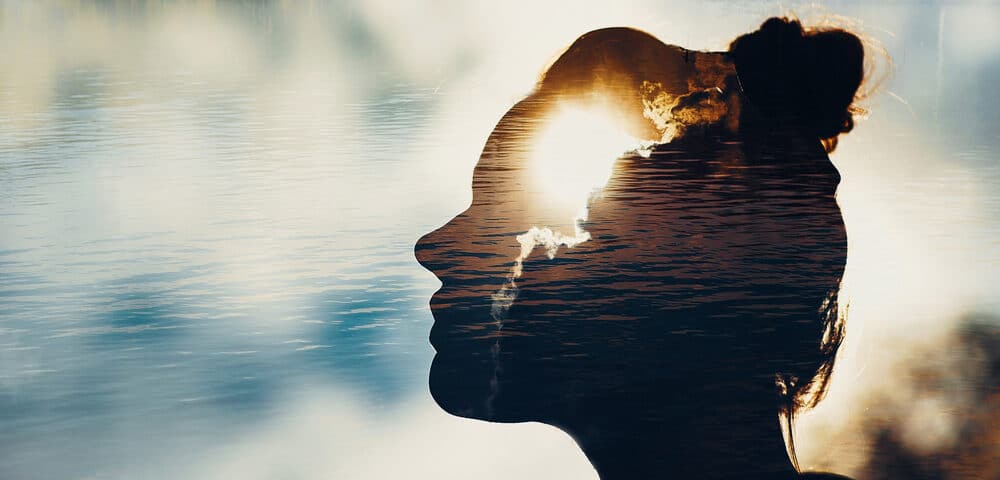
Light-based Medical and Health Devices (Part 2)
April 18, 2024
Dental History: Ancient Dentistry
June 15, 2024How Light-based Technologies Are Being Used to Treat Mental Health and Emotional Health Issues
In this, Part 3 of our “Light-based Medical and Health Devices” series, we are considering the various light-based technologies that are used in the therapeutic treatment of mental and mood disorders, including depression, anxiety, insomnia, bipolar disorder, and more. If you’ve not been reading this series, make sure to catch up on our coverage of Part 1 and Part 2 on the AlgerBlog.
Light-based medical and health devices are currently enjoying an explosion of popularity. They have proven to be effective, noninvasive options for treating minor cosmetic issues and severe, life-threatening diseases. With proven successes in areas such as medical research, imaging, and dermatology, the efficacy of novel applications for light-based technologies and treatments is being explored. In this AlgerBlog, we are looking specifically at the uses of light-based technologies in the treatment of mental and mood disorders to see where light treatments have established a proven track record and where potential new applications may emerge.
Light-based Technologies Being Used in the Mental Health Field
1. Circadian Rhythm Stimulation Devices
Circadian rhythm stimulation devices, sometimes referred to as circadian lighting systems, are designed to mimic the natural patterns of light and darkness by emitting specific wavelengths of light to help regulate the body’s circadian rhythms. Disruption of the natural circadian rhythms can negatively impact a number of conditions, including insomnia, depression, and bipolar disorder, and may affect a diverse population, including shift workers with heavily night-based or erratic schedules, students, and individuals with sleep and circadian rhythm disorders.
How Do Circadian Rhythm Stimulation Devices Work?
Circadian rhythm stimulation devices come in different forms and may be as simple as smart light bulbs or wake-up lights. More encompassing approaches would include dynamic lighting systems installed throughout one’s home or workspace that can adjust the color temperature and intensity of light throughout the day. During the morning and daytime, the light emitted by these devices is bright with a cool color temperature (blue-enriched), similar to natural sunlight. As the day progresses, the light gradually shifts to warmer tones with reduced intensity, resembling the sunset and evening hours. By simulating natural light patterns, these devices can help improve sleep and mood, helping to treat the disorders listed above.
2. Light Therapy Boxes for Seasonal Affective Disorder
Light therapy boxes, also known as bright light therapy or phototherapy boxes, are used to treat Seasonal Affective Disorder (SAD), a type of depression that typically occurs during the late fall and winter months as natural sunlight grows increasingly scarce. SAD can be particularly prevalent in northern regions, where sunlight is comparatively more limited than in central and southern regions. In Northern Canada and parts of Norway, Finland, and Sweden, for instance, winter nights might last as long as 17-18 hours. SAD can be mild, resulting in decreased energy or a sense of feeling “down.” More extreme cases may influence how one feels, thinks, and behaves, with symptoms including depression, anxiety, feelings of hopelessness, loss of concentration, fatigue, and even physical pains, such as headaches and cramps.

How Does Light Therapy Treat Seasonal Affective Disorder?
Light therapy is one of the main ways of treating SAD. Light therapy boxes produce bright light ranging from 2,500 to 10,000 lux. This level of light is notably brighter than indoor lighting, but it is not as intense as direct sunlight. However, this range can serve as an impactful supplement to the limited daylight hours experienced by those in the north and thus is effective in combating SAD. Light therapy treatments are typically taken on a daily basis, at a consistent time (usually in the morning hours), and may require as little as 20-30 minutes per session. Like the dynamic lighting systems described above, light therapy boxes help regulate the circadian rhythms and it is believed that light therapy can affect the brain chemicals serotonin and melatonin, which play a role in mood regulation.
3. Wearable Light Devices
In addition to light therapy boxes, simple and dynamic lighting systems, and other environmental devices, there are various types of wearable light devices that are used to administer light therapy in the treatment of mood disorders. These devices are designed to be portable and convenient, allowing individuals to receive light therapy treatment while on the go and in a diversity of environments. Light therapy glasses and visors use LED lights that emit bright light directly into the eyes. These devices can be used as more compact and portable stand-ins for the light therapy boxes described above and are used to treat SAD and other mood disorders that are not seasonally defined.

Exploring New Light-based Device Applications: Light Therapy Headbands
There are also light therapy headbands, which are wearable light devices that wrap around the head and emit therapeutic levels of light to the scalp and forehead. These headbands typically feature adjustable settings for light intensity and duration and may include additional features such as built-in sensors to monitor light exposure and track treatment progress. Light therapy headbands are often used to treat conditions like depression and may be worn while performing tasks that require mobility, such as household chores or exercise.
Light therapy headbands are one area where the positive effects are not yet fully known but which show some promise as a non-invasive and convenient treatment option for certain conditions. It’s one of the many novel areas of exploration for light-based technologies. However, more research is needed to fully understand their effectiveness and optimal use.
4. Transcranial Photobiomodulation
Transcranial photobiomodulation (tPBM) is another area of promising exploration in the realm of light-based technologies. It is a non-invasive technique that uses low-level light therapy (LLLT) to stimulate the brain. This therapy typically uses near-infrared light directly targeted at brain tissue. The light is thought to stimulate cellular function and metabolism, leading to various potential therapeutic effects.
tPBM light therapy devices usually consist of a light source, such as LEDs or lasers, embedded in a helmet-like apparatus. The device is placed on the head to deliver near-infrared light through the scalp and skull to the brain. Other approaches may involve the use of laser probes that are placed directly on specific areas of the scalp, directing light through the nasal cavity using intranasal devices, or–in a more invasive approach–using optical fibers inserted through burr holes drilled into the skull.
Transcranial Photobiomodulation: An Ongoing Area of Research
The exact mechanisms by which tPBM exerts its effects are not fully understood, but it’s believed to influence mitochondrial function, increase blood flow, reduce inflammation, and promote neuroplasticity. These effects could potentially benefit conditions such as traumatic brain injury, stroke, neurodegenerative diseases, depression, and cognitive impairment. tPBM is still an area of ongoing research, and its efficacy for different conditions is still being investigated. However, early studies have shown promising results, and it’s considered a relatively safe and well-tolerated intervention when administered correctly.
Closing Thoughts

This article concludes our three-issue overview of light-based medical and health devices. Over the last few months, we’ve identified numerous innovative devices that are currently being used to assist medical practitioners in the treatment of minor and serious disorders–both physical and mental–as well as cosmetic concerns. This article highlights a number of ways light-based devices are being used and explored to manage mental-emotional disorders, including seasonal affective disorder, anxiety, and depression. New applications such as light therapy headbands and the promising results of transcranial photobiomodulation, ensure that light-based treatments and technologies will only continue to grow and improve the lives of patients suffering from a wide spectrum of issues.
Continue to explore and learn about new innovations in light-based technologies and treatments on the Alger blog.



